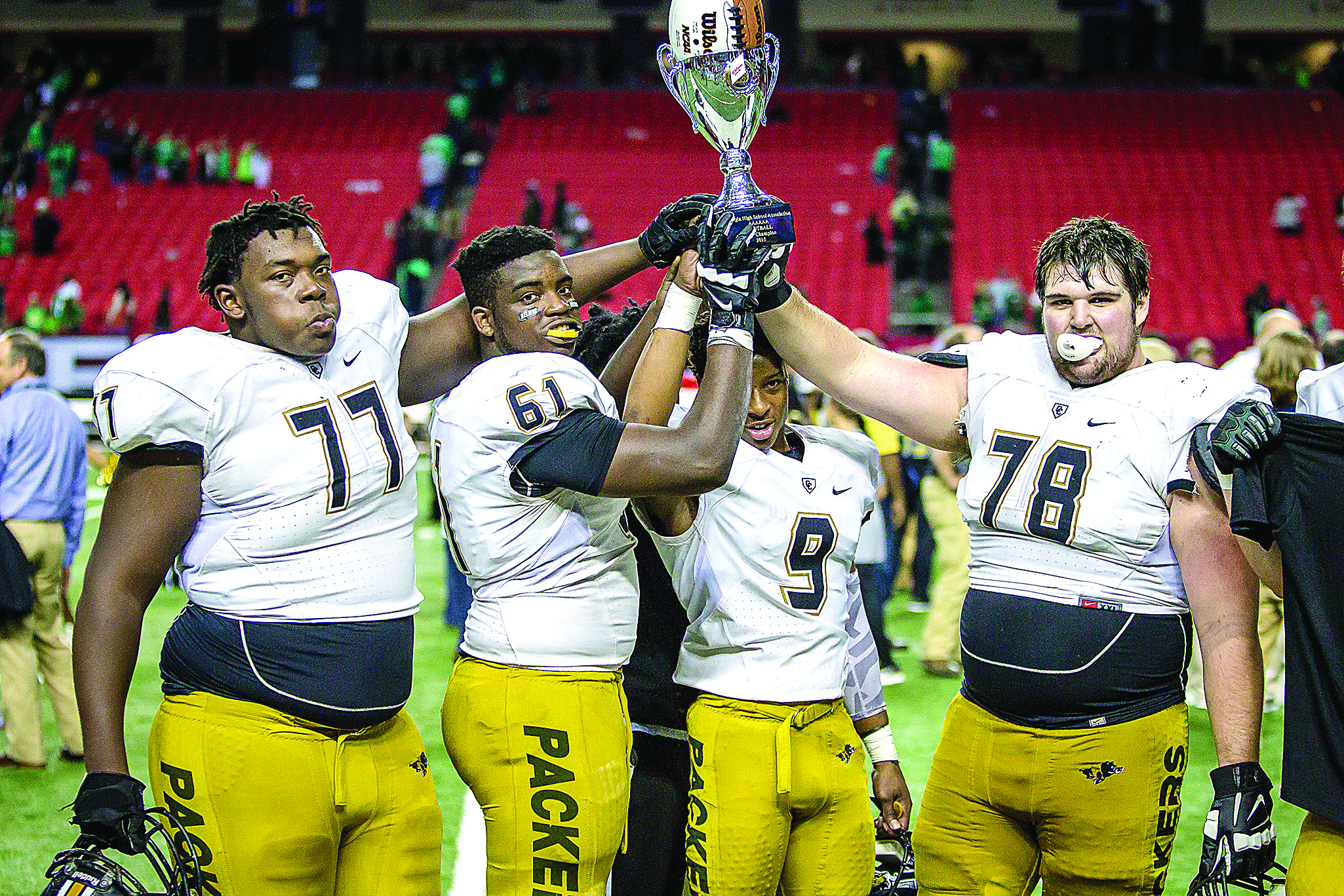EDDIE SEAGLE: June notes for the landscape
Published 8:30 am Wednesday, June 1, 2022

- Eddie Seagle is a Sustainability Verifier, Golf Environment Organization (Scotland), Agronomist and Horticulturalist, CSI: Seagle (Consulting Services International) LLC, Professor Emeritus and Honorary Alumnus (Abraham Baldwin Agricultural College), Distinguished Professor for Teaching and Learning (University System of Georgia) and Short Term Missionary (Heritage Church, Moultrie). Direct inquiries to csi_seagle@yahoo.com.
“June is the gateway to summer.” Jean Hersey. “In early June, the world of leaf and blade and flowers explodes, and every sunset is different.” John Steinbeck. “June suns, you cannot store them.” A.E. Housman. “It is the month of June, the month of leaves and roses, when pleasant sights salute the eyes and pleasant scents the noses.” Nathaniel Parker Willis. “I wonder what it would be like to live in a world where it was always June.” L. M. Montgomery.
Trending
May has passed and June has arrived. The days of summer draw near. The landscape continues to ask for attention as you devote more time to outside chores. Your June notes for the landscape include the following items.
Annuals: It’s time to plant more zinnias, nasturtiums, and other annuals for a great late summer and fall show of color. Continue to dead-head annuals that have already bloomed and expired. Cut-back impatiens and other leggy annuals to encourage compact growth and more blooms. Harvest leaves and cut back herbs to encourage healthier growth. Plant celosia, coleus, crossandra, exacum, hollyhock, impatiens, kalanchoe, marigolds, nicotiana, ornamental pepper, periwinkle, portulaca, and salvia.
Bulbs: Dig up and divide over-crowded irises and daylilies at this time. Pinch off expired blooms for effective nutrient management and better subsequent flowering. Give your plants a good watering once or twice a week rather than frequently and lightly. Looking ahead, bulbs good for July and August plantings include African iris, Aztec lily, butterfly lily, crinum, gladiolus, iris, Kaffir lily, society garlic, spider lily, and walking iris.
Patriotic gardening: Many annual plants are available advertising the red, white and blue colors of our great country for exhibition and seasonal celebration at your home or office. How you plan your color choices and implement your projects help to dictate the degree of effectiveness that you and your guests will enjoy. Your planting designs can be simple and follow basic guidelines, or you may elect to develop a more elaborate patriotic flower display. Such examples may include developing an area of your front lawn or landscape in public view for outstanding curb appeal with an astounding American flag planting, a fascinating outline of the good ole USA, a liberty bell planting using select annuals, or simply placing the grand ole flag on display.
Perennials: Continue dead-heading your perennials as needed for curb appeal and plant health. Stop pinching off mums next month so they can develop flower buds for the fall.
Pruning: Pruning of large trees should be a job that is out-sourced to qualified tree care professionals with the proper equipment. Ask questions and get answers before contracting with any company. Be sure that they are bonded and follow safety precautions. Otherwise, you can do most of the pruning of shrubs and small trees if you get the proper advice, equipment and training. For example, to shorten a branch or twig, cut it back to a side branch or make the cut about 1/4 inch above the bud. Always prune above a bud facing the outside of a plant to force the new branch to grow in that direction.
Trending
To properly remove large branches, three or four cuts will be necessary to avoid tearing the bark and damaging the tree. Make the first cut on the underside of the branch about 18-inches from the trunk by undercutting one-third to one-half way through the branch (be careful not to bind the saw with the weight of the limb). Make the second cut a couple of inches further out on the top of the branch until the branch breaks free and falls to the ground. Be sure that all safety precautions have been followed and that the falling branch does not harm people, property, or other plants.
Before making the final cut which will separate the branch base from the main stem or trunk, identify the branch collar which grows from the stem tissue around the base of the branch. Then make the pruning cuts so that only branch tissue (wood on the branch side of the collar) is removed. Be careful to prune just beyond the branch collar without damaging the collar or leaving a stub. If the branch collar is left intact and undamaged after pruning, the wound will seal more effectively and the stem tissue will not decay. By following this procedure, the health of the tree will not be compromised.
Trees and shrubs that flower early in the growing season on last year’s growth should be pruned immediately after they finish blooming. Do not prune azaleas after the second week of July or the buds for next year’s blooms will be removed and fewer flowers will develop next spring. Complete the last pruning of other shrubs in September so that new growth can mature and harden-off before cold weather arrives. Prune damaged or dead branches on trees and shrubs as needed.
Scout plants: Scout all your plants and flowers throughout the landscape on a regular basis to make sure they are healthy, alive, and vibrant. Dehydrated or dead plants and flowers become eyesores and reduce curb appeal while becoming a distraction and liability and should be removed and replaced with new flowers, plants, or container plantings. When purchasing new plants, select low-maintenance and sustainable varieties that offer curb appeal with minimum effort to grow.
May this bit of awareness ignite your desire to learn and ask questions, encourage you to further apply your gained knowledge, and bring you to further realize that environmental stewardship and sustainability should be at the foundation of all your home landscape activities.
—
“Each of us should please his neighbor for his good, to build him up.” Romans 15:2. “Be devoted to one another in brotherly love. Honor one another above yourselves.” Romans 12:10. “Rejoice with those who rejoice; mourn with those who mourn.” Romans 12:15. “God did not send his Son into the world to condemn the world, but to save the world through Him.” John 3:17. “I consider my life worth nothing to me, if only I may finish the race and complete the task the Lord Jesus has given to me — the task of testifying to the gospel of God’s grace.” Acts 20:24
Eddie Seagle is a Sustainability Verifier, Golf Environment Organization (Scotland), Agronomist and Horticulturalist, CSI: Seagle (Consulting Services International) LLC, Professor Emeritus and Honorary Alumnus (Abraham Baldwin Agricultural College), Distinguished Professor for Teaching and Learning (University System of Georgia) and Short Term Missionary (Heritage Church, Moultrie). Direct inquiries to csi_seagle@yahoo.com.





